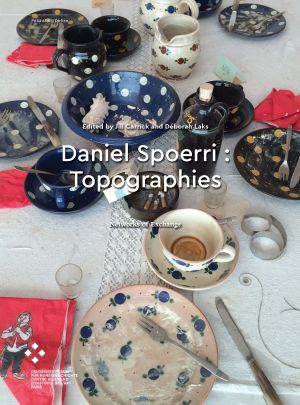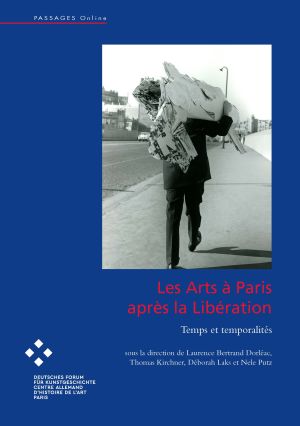Wagner, Monika
Kunst und Material. Konzepte, Prozesse, Arbeitsteilungen
Media diversity, an expanded notion of the artwork and a changed understanding of creativity have shaped art since the modern era. This creates new challenges for the reception and preservation of a work as well as for the concept of authorship and the idea of authenticity. The separation of design and implementation in contemporary art also establishes a new form of art production based on the division of labour with manifold implications. The contributions in this volume show that such developments require innovative, interdisciplinary approaches at the interface of the history of technology, conservation science and art history.
Daniel Spoerri : Topographies: Networks of Exchange
Daniel Spoerri's oeuvre occupies the intersection of several artistic trends and tendencies. Most commentators on his work, on the other hand, considered him a New Realist artist, and his work is often reduced to that of the trap paintings. This abbreviation, consolidated by art historiography and largely formed by the classificatory efforts of Pierre Restany, corresponds, however, to only a small part of his oeuvre. Spoerri's films, his poetry, his books, the MAT editions, his importance as an organiser of events and exhibitions are examples of the diversity and openness of his activities. In the 1960s he was close to Fluxus and Zero and laid the foundation for Eat Art. Understanding the artist's work as part of transnational networks that combine different disciplines and theoretical and material approaches suggests a re-evaluation of Spoerri's interactions with a wide range of contemporary actors. This book explores these questions as the proceedings of the colloquium "Topographies of Daniel Spoerri: the artist in his networks" organised by Jill Carrick and Déborah Laks at DFK Paris on 22 and 23 October 2018.
Le travail de Daniel Spoerri se situe au croisement de plusieurs courants et tendances artistiques. Pour la plupart des commentateurs, il est pourtant généralement abordé comme un artiste du Nouveau Réalisme, et son œuvre antonnée au Tableau-Piège. Cette place délimitée, forgée par une historiographie largement marquée par les efforts classificateurs de Pierre Restany, ne correspond en réalité qu’à une petite partie de son travail. Ses films, sa poésie, ses livres, les éditions MAT, ses activités d’organisateur d’évènements et d’expositions sont autant d’exemples de la diversité et de l’ouverture de ses champs de recherche. Dans les années 1960, il se rapproche de Fluxus et de Zero et pose les fondements du Eat Art. Son œuvre s’inscrit dans des réseaux transnationaux mêlant des disciplines, des approches théoriques et matérielles différentes, et il importe aujourd’hui de réévaluer ses interactions avec les différents acteurs de la période. Cet ouvrage constitue les actes du colloque « Topographies de Daniel Spoerri : l’artiste en ses réseaux » organisé au DFK Paris par Jill Carrick et Déborah Laks les 22 et 23 octobre 2018.
Les Arts à Paris après la Libération: Temps et Temporalités
The volume sheds new light on the Parisian art world after the Second World War, its protagonists, inter(national) dimensions and aesthetic challenges. It assembles a selection of contributions of the annual congress 2014/15 held at the German Center for Art History Paris as well as further results of research undertaken during that same year. Besides questions of historiography the publication focuses on case studies in which renowned artists like Giacometti, Picasso and Brassaï are analized. Furthermore, new protagonists, institutions and media are introduced and innovative perspectives developed. The volume thus makes a valuable contribution to the reevaluation of art of the postwar period.









